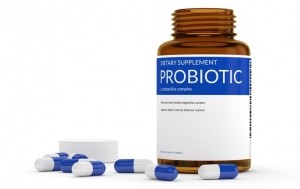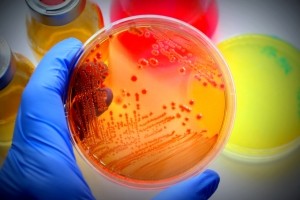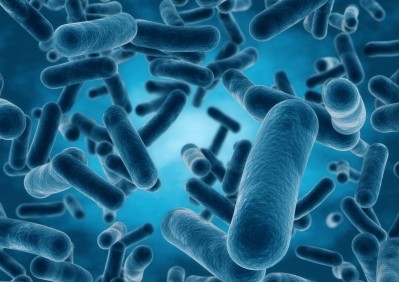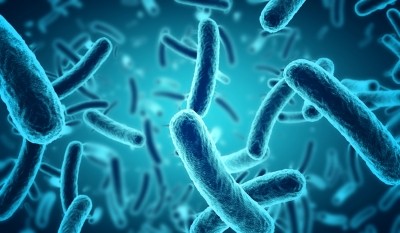The 18 things we learned from the IPA’s DC Workshop 2017

The workshop, which took place on October 26 at the Bethesda Marriott, also explored FDA’s position on the ODI list, the work going on at USP on the General Chapter <64> Probiotics Tests, and developments by DuPont on using PCR to identify and enumerate probiotic products.
Here were the big takeaways:
The market
1. The global market for probiotic dietary supplements will close at over $5 billion this year, according to data from Euromonitor International. While consumers in the US favor supplements for their probiotics, other regions (notably APAC and LATAM) favor foods, said IPA Executive President George Paraskevakos
2. Over 33 million US adults are using probiotics, with 44% of these consuming probiotics from dietary supplements only, 28% from food only, and the other 28% from a combination of food plus supplements, added Paraskevakos. The use of probiotic supplements and foods has increased 20% since 2015.
3. Consumer survey data from Kantar Media presented by IPA’s Paraskevakos indicated that the five main reasons US consumers use probiotics are: 1. To achieve good health; 2. To lose weight; 3. To lower/maintain cholesterol; 4. To maintain weight; and 5. To control BP (consumer opinion and not related to product claims).
Standards and standardization
4. The U.S. Pharmacopeia has assembled a probiotics expert panel, chaired by Dr Mary Ellen Sanders, executive science officer for the International Scientific Association for Probiotics and Prebiotics (ISAPP). USP standards are specifications (test, test procedure & acceptance criteria) for ID, assay, purity, contaminants & others as needed, explained Dr Sanders.
5. The main areas being discussed by the expert panel are: Probiotic identification at the strain level; the pros and cons of testing methodologies; enumerations vs flow cytometry; contaminants/impurities; and industry collaboration/ harmonization opportunities.
6. For enumeration, this needs to be suitable for end of shelf-life, said Dr Sanders. “It is important to establish viability through end of shelf-life.” (This is also stipulated in the IPA labeling guidelines, issued Jan 2017) LINK
7. USP is also working on the General Chapter <64> Probiotics Tests: This is not a review of general information on probiotics, but it is a repository for methods and acceptance criteria that are repeated in multiple monographs. The General Chapter is useful for making monographs more concise.
Views from the FDA
8. Dr Cara Welch, Senior Advisor for the Office of Dietary Supplements at the FDA, summarized the ongoing work to establish a list of Pre-DSHEA ingredients (or old dietary ingredients/ODIs, also know as “grandfathered” ingredients). The Agency recently hosted a public meeting to discuss what evidence is acceptable to demonstrate an ingredient is old, and what process should be used to develop the list. “We’re only looking at the US for evidence,” she said. “It doesn’t matter about other countries and regions.”
9. The ODI list is “not necessarily a list of safe ingredients”, she cautioned. “It also doesn’t mean that anything that isn’t on the list is new.” The public comment period is open until Dec 4, 2017, and can be accessed at Regulations.gov under Docket No. FDA-2017-N-4625.
10. Regarding GMPs, Dr Welch noted that there have been about 500 inspections for domestic dietary supplement firms (all firms, not limited to probiotics), plus another 100 foreign inspections, with between 70 and 80 warning letters sent per year, and 4-6 injunctions per year. “We’ve shut down over 20 firms in 5 years for GMP violations,” she said.
11. The FDA has been working to establish on a whole genome database for microbes commonly found in dietary supplements. Since first reported by NutraIngredients-USA, the agency has significantly expanded its testing of probiotics to include some food products, said Dr Carmen Tartera, research microbiologist in the Division of Molecular Biology, Office of Applied Research and Safety Assessment, FDA.
Analytical advances
12. NIST (National Institute of Standards and Technology) is developing methodologies to enable measurement assurance of complex microbial communities, but there remains a lot of heterogeneity across labs, said Dr Scott Jackson, Leader of the NIST’s Complex Microbial Systems Group. “We sent a number of labs the same DNA sample and they all sent back different results,” he said. “Quantitative genomics needs some work.”
13. Buffy Stahl, global business development leader at DuPont Nutrition and Health, explained that standard PCR (polymerase chain reaction) methods can identify strains but not enumerate. However, DuPont has now developed a digital PCR method to quantify live cells in a blend, while using the power of PCR to identify the strains simultaneously. A proof of concept was performed with a blend of three L. plantarumstrains. The method will be submitted for publication in a peer-review journal in the near future, Stahl told NutraIngredients-USA.
IPA Committee updates
14. While the NDI draft guidance (and the ODI list) remain a key concern for probiotic players in the US, other countries are working to establish or change existing regulations, which would have implications for probiotics, explained Solange Henoud from Lallemand, who is also the Chair of IPA’s Regulatory Affairs Committee.
“In Brazil, they are in the process of establishing regulations, but we don’t know yet which way this will go,” she noted. “In Korea, they are imposing some identification methods, but maybe they are the wrong methods.”
15. IPA’s Manufacturing Committee is in the process of finalizing and releasing contract manufacturing organization & quality standards, explained Dr Greg Leyer, UAS. The aim, he said, is to advance probiotic manufacturing standards and shape probiotic manufacturing guidelines. IPA aims to publish the final guidelines at the start of 2018.
16. Representing the IPA Technical Committee, Buffy Stahl explained that the committee’s aim is to developed IPA-recommended standards for probiotic testing, including identification testing; standards for enumeration; purity and recommended contamination testing.
“There is a [general dietary supplement] seal program from USP already – but are there any other standards that may be different from USP today?” she asked. “Also, there is no certification for probiotic foods, only supplements.”
There have been demands from several brands to certify probiotics, she noted, and IPA is assessing some of the options that already exist, such as Tru-ID and IPRO.
17. The work of the Education & Marketing Committee is to establish IPA as known, respected & sought-after source of scientific and technical info for probiotics/ microbiome, explained the committee’s chair, Christina Phelps, regulatory policy associate for Amway. “One focus will be on influencers, like healthcare practitioners, with initiatives such as Probiotics 101, which would include a website, webinars, and additional outreach.”
18. There is also the opportunity to develop a guidance or standard by Codex Alimentarius, explained Dr Amy Smith from DuPont Nutrition & Health and the IPA Codex Task Force Chair. While there is the well-established FAO/WHO definition (2001) of probiotics, there is a “global occurrence of products sold as “probiotics” that do not meet this definition,” said Dr Smith.
“The probiotics industry recognizes the need & opportunity for development of a Codex guidance. Our ultimate goal is the establishment of eligibility criteria to ensure the consistent application at national and international levels by Codex member countries,” she said. “Would like to propose to Codex probiotic standards harmonization.”
IPA, which has NGO status at Codex, will put this initiative in front of nutrition committee at the December 4-8 meeting in Berlin.


















